Impressionism - Monet and Renoir, La Grenouillére (The Frog Pond), 1869
- Andrea Hope

- Jan 14, 2017
- 3 min read

In the summer of 1869 Monet was living in conditions of extreme hardship with his family at Saint-Michel, a hamlet near Bougival, west of Paris. The two works he had submitted to the Paris Salon that year (The Magpie and Fishing Boats at Sea) had been rejected, and he was keen to paint a 'tableau' (living picture) to submit to the Salon in 1870 that might find fresh mass appeal.
Renoir, also desperately poor at the time, was staying in the vicinity with his parents, and he and Monet painted together at La Grenouillére (The Frog Pond) a popular meeting place on the river near Bougival, which was easily accessible by train. Here people met to swim, dance and drink.
The restaurant at La Grenouillére, which was located on a barge, was a fashionable place for the emerging middle class to enjoy the new pleasures of suburban Paris. The small island next to the restaurant, with a weeping willow at its centre, was known as Pot de Fluers (flowerpot) or The Camembert. Accessible by gang planks, people would meet and talk before progressing to the bar of La Grenouillére.
The name La Grenouillére was based on its double meaning. It's not only the French word for frogpond, but it was also used colloquially to describe women who were, as Renoir’s son in his memoir of his father put it, "not exactly prostitutes, but a class of unattached young women, characteristic of the Parisian scene [at the time], changing lovers easily, satisfying any whim, going nonchalantly from a mansion on the Champs-Elyseés to a garret in the Batignolles".
He continued, “Among that group Renoir got a great many of his volunteer models. According to him, the grenouilles, or ‘frogs’ were often ‘very good sorts’. Because the French people love a medley of classes, actresses, society women and respectable middle-class also patronised the… restaurant”.

Both Monet and Renoir were living a 'hand to mouth existence'. Monet would literally paint until he ran out of colour, then take up sketching in preparation for the next time he could pull together a few francs from his friends in order to continue. Renoir was being supported by his family. Thankfully the owner of La Grenouillére, Monsieur Fournaise, accepted some of their paintings in exchange for food.
They painted scenes of boats and swimmers and of couples strolling along the water's edge or crossing the gangplanks. Painting many views of the same scene quickly, they captured the changes in light and atmosphere as the day progressed. In their surviving works from that summer, it is clear that they usually painted alongside each other.
In experimenting with techniques for painting outdoors, they developed a method for capturing the play of light on water. They painted rapidly with short, comma like brushstrokes, and they juxtaposed sharply contrasting, unmixed colours which brought a shimmering life to water. It enabled them to portray the transitory effects of light and atmosphere - goals they had been pursuing for years. Both came to value the sketchy, unfinished quality of the work.
August- Renoir's Paintings
Details from Renoir's paintings
Renoir painted huddles of people on the camembert, experimenting with little patches or taches which were indistinct wiggling strokes which he applied by putting one mark next to another, creating subtle colour variations. He also dashed off bright white impasto (thick paint straight out of the tube) across the water, suggesting reflections of bright light and the movement of the water created by the bathers and the boats.
Claude Monet's Paintings
(It's considered that the lost painting of La Grenouillére, photographed above, was his 'tableau' which he submitted to the Salon in 1870, but was rejected.)
Details for Monet's paintings
Monet was also experimenting with new ways of reflecting water - using huge broad strokes of brown, white and blue. His preference for treating forms in bold masses, juxtaposing patches of colour and suppressing unnecessary detail echoed Japanese (Hiroshige) woodcuts. (It appears that he began collecting Japanese woodblock prints as early as 1864–65 and owned volumes of work by Hokusai.)
Monet may have incorporated the innovations into his paintings the most boldly, but it is not possible to say who was the key initiator of the changes they made to their painting styles. However, the discoveries they made that summer from painting together and sharing ideas, and the techniques they developed, clearly influenced the evolving Impressionist style.

If you'd like to know more about Monet's painting techniques and the how and why they evolved, you'll find comprehensive information in the e-course.
Comparing the two paintings of the cambered above, how would you describe the differences in style of Monet and Renoir?







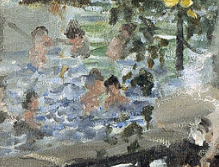
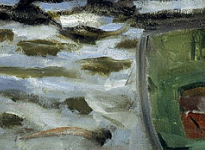
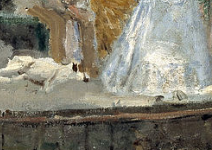
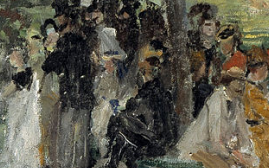









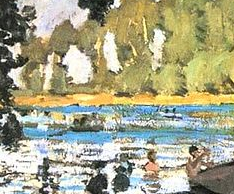











Comentarios